Posts Categorized: National
-

Once Upon an Energy Efficiency Conversation: Using Storytelling to Talk About Energy Policy
by Sam Randall
During this holiday season and time of sharing stories around the table, I had the great pleasure of sharing my blog posts with family and friends for the first time. With their insightful feedback I was inspired to write a new post about what I learned from the experience.
Prior to sharing my 2024 blogs, I repeatedly ran into the same communication barrier when trying to explain energy efficiency policy work: confusion over terminology and bias about climate and/or energy science. Read More
-

Youth Apprenticeship Week: Energy Efficiency Workforce Development
by Aileen Villa
Recently, I had the wonderful opportunity to attend the 2024 Home Performance Conference (HPC) for the second time since entering the energy efficiency industry. This year, I engaged with several sessions in HPC ‘24’s Workforce Development Track. I gained insight from sessions thoughtfully titled “Registered Apprenticeships: Building Career Pathways in Energy Efficiency” and “Youth in Home Performance: What it Takes to Attract and Retain Young People,” among others.
Listening to the folks navigating apprenticeship and training programs in energy was very rewarding. I’m happy to share a bit about some organizations spearheading this important work.
-

#EEDay2023: Energy Efficiency Everywhere All at Once
by Aileen Villa
Each year on the first Wednesday in October, Energy Efficiency Day is widely celebrated. October 4 is your chance to join the campaign not only to proclaim the immense benefits of energy efficiency, but also to highlight all the work being done to advance EE.
You are invited!
-

Unparalleled Opportunities Arise for Energy Efficiency Job Growth: Report
by Pat Stanton
Energy efficiency (EE) initiatives are needing increased attention with new federal funds. This translates into more jobs on the way. Energy Efficiency Jobs in America shows there are nearly 2.2 million efficiency workers, and the number will rise as infrastructure investments kick in this year. Making these workforce statistics available now is important, so that we have a baseline for comparison.
-

Weatherization Without Walkaways: Change is Coming, But Needs a Push
by Steve Cowell
Weatherization is in the news more than ever, with infrastructure funds coming and with state and federal legislation proposed to improve buildings.
Funding is necessary, but not sufficient, to solve our nation’s crisis in substandard housing. We absolutely need smart strategy. If we do not apply funds quickly and effectively, this opportunity could turn into its own crisis. This is what keeps me up at night.
-

Women Leaders Aim for a More Representative Energy Efficiency Industry
by Carina Wallack
“As a Latina-mom, an entrepreneur, an employer, and a community member, I am always looking to expand access for people like myself,” says Leticia Colon de Mejias, who started Energy Efficiencies Solutions in Connecticut. She’s right. Greater access to the energy efficiency industry is needed.
For Women’s History Month, I want to highlight women driving progress in the energy efficiency industry. I was lucky to connect with generous leaders in the Northeast U.S. who are making enormous contributions. Read More
-

With Building Efficiency Retrofits, You Really Can Have It All
by Carina Wallack and Pat Stanton
Care about economic and environmental well-being? If so, you realize that our most valuable assets are sectors that create jobs quickly while cost-effectively reducing emissions for the long haul. Building energy efficiency investments accomplish this and more.
Read More -
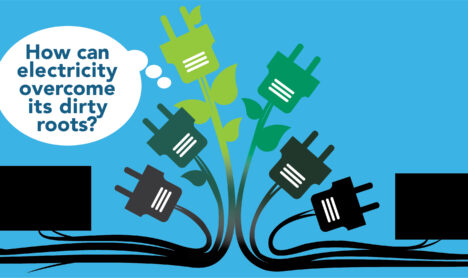
Efficiency: Minimizing Total Costs of a Precious Resource
by Pat Stanton
Fighting climate change hinges on transitioning consumption to what will become our most precious energy resource: zero-carbon electricity.
Read More -
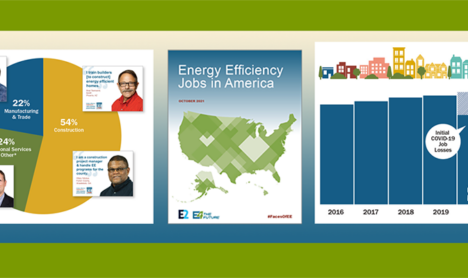
Energy Efficiency Jobs in America 2021: The Power to Tackle Our Thorniest Issues
by Steve Cowell
Energy Efficiency Jobs in America explores the workforce that comprises the largest part of U.S. energy sector employment. It also shows how energy efficiency has the breadth and depth to tackle our thorniest issues. Efficiency holds the promise of solutions for climate, equity, and economy.
Energy efficiency businesses across the country were gutted by the pandemic. They continue to be impacted by economic and workforce challenges. Yet day after day, efficiency workers — who are unsung heroes — rise to give their best effort. Read More
-
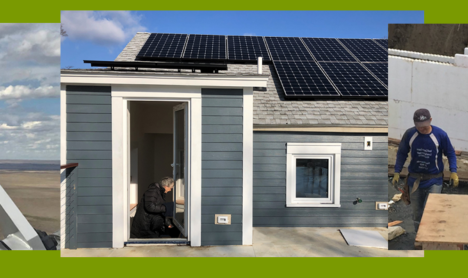
How Can We Better Account for Economic Development in Benefit-Cost Analysis?
by Shayna Fidler, Julie Michals, and Devin Hubbard
Recent news headlines are dominated by stories of growing investments in distributed energy resources (DERs). “Utility to Jump Start EV Charging Infrastructure,” “Flexible DERs to Replace Natural Gas Peakers,” and “Doubling Down on Energy Efficiency to Fight Climate Change” are becoming common topics. As the shift to a cleaner, more flexible electric grid expands in the US, the connection between investing in DERs and the associated economic development impacts is critical to building a competitive and sustainable clean energy industry.
-
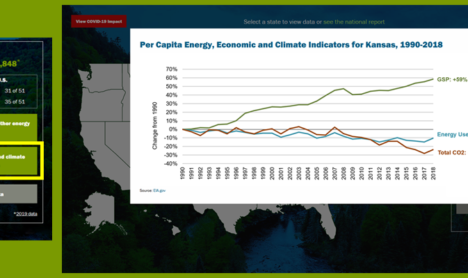
Energy Independence in a New Light: Economy Grows, Yet Uses Less Energy
by Pat Stanton
Throughout the 19th and 20th centuries, conventional wisdom equated economic growth with a rise in energy use, across the board. An examination of trends over the past three decades, proves that the correlation is no longer valid.
A Synapse Energy Economics analysis of data from the Energy Information Agency (EIA) recently commissioned by E4TheFuture compares per capita economic growth, energy use and CO2 emissions nationally, and for each state and the District of Columbia.
Read More -

State-Level Policy Choices Matter (a lot!) for Climate
by Steve Cowell
At this moment federal leadership changes are center stage, and may likely bode well for U.S. action on climate. Yet I want to focus beyond national news, calling your attention to a simple fact: States and cities need to remain at the forefront of implementing climate solutions.
Think of it as a “both/and” approach: Policy choices and implementation decisions by state officials as well as city leaders will help to move us forward, and can complement and execute positive federal legislation while administering programs. For meaningful U.S. progress on climate change, cooperation by and within states must be prioritized. Read More
-
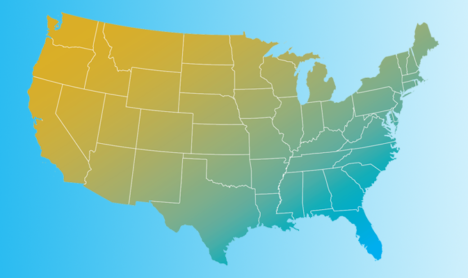
Rebuilding the Energy Efficiency Workforce
by Steve Cowell
“A year like no other.” Say it anywhere, and you see nods of agreement. In moments of solidarity you can muster a rueful half-smile. We all know that the impacts of 2020 on people’s lives are profound. What about energy efficiency professionals specifically? This community of workers is very much on my mind.
Read More -

Carsharing: The New Challenges and Opportunities Presented by COVID-19
by Rachel Ehrman
The COVID-19 pandemic has shaken the world. It’s affected everyone, every business, every industry. While this time is one that is surely testing us all (hundreds of thousands of clean energy jobs vanished in a few short weeks), it is also a time to pause, reflect, and reshape our work to come out of this difficult time more resilient than before. This is especially true of industries that rely on shared use when many people seek every precaution possible to avoid the virus. Despite its environmental and financial benefits, carsharing is struggling. Read More
-

Faces of EE to COVID: “You might break our stride, but you can’t break our spirit.”
by Pat Stanton
“We will put our best foot forward.”
When I listen to energy efficiency professionals, among their many struggles today I hear determination and grit. People are figuring out what to do next, how to retool and help each other. Online training is a big part of what can happen right now. And new ways of minimal- or no-contact building retrofits are taking shape.
A multitude of voices are asserting we must “build back better” — focus resources and efforts on a clean economy, a healthy and equitable future. Despite the gut-punch reality of job losses revealed last week, EE pros are stepping up to find a possible path forward. Read More
-

Optimized Charging for EVs (Part 2): Who GIVs a V2G?
by Susan Buchan
Electric vehicles and hydrogen-fueled vehicles continue gaining market share. Why should you care? With these increases, the opportunities and challenges of transportation electrification are real – and coming soon to a driveway near you! EVs are now expected to reach parity with internal combustion engine vehicles in 2022, due to steady declines in battery costs.
-

Emissions Optimized Charging for EVs (Part 1): Should “What” Matter More Than “When”?
by Susan Buchan
Are we on the verge of an EV “tipping point” similar to other technological advances that found rapid acceptance and integration into the marketplace? Projections show the rise of electric vehicle adoption in the US is positioned to continue and increase. Historical data show refrigerators, clothes dryers, color TV, personal computers, and smartphones all rose from early-adopter status to widespread diffusion and ownership in about ten years.* Read More
-

Smarter Energy Savings: Technology’s Expert Voices
by Carina Wallack
with Jessica Granderson, Greg Marsicek, Jamie Peters, and Kevin DeMasterDo you think about renewables as the most innovative set of technologies for reducing emissions and meeting customer needs? If so, I want to challenge that perception: Energy efficiency should get more credit, and we’ve got the expert voices to prove it!
New efficient technologies provide less expensive — and more effective — solutions than you may realize. Efficiency reduces energy bills and improves air quality and comfort, while also enabling the success of renewable resources. To meet our nation’s climate goals, efficiency alone can contribute 50 percent of necessary emissions reductions by 2050, according to ACEEE. Read More
-

Three Reasons the Secret’s Out about EE Jobs
by Steve Cowell
Only a few of us knew the secret at first. You’ve heard it by now though, as more and more people catch the knowledge: Energy efficiency is a solution that grows jobs and builds careers as it contributes to local economies. By local, I refer to essentially every county across the United States. Energy efficiency now supports an American workforce of more than 2.3 million people, and continues rising.
I am excited to share great news with you: Our 2019 Energy Efficiency Jobs in America is now available. It offers granular details you will find useful and valuable if you care about helping to advance clean energy, as I do. Read More
-

Orchestrating a Better Outcome
New Playbook Offers Guidance on “Energy-Plus-Health” Programs
by Julie Michals and Ellen Tohn
Twentieth-century music giant Sergei Prokofiev wrote the timeless Peter and the Wolf to help teach about the orchestra. We thought it fitting to use Prokofiev’s approach to tell a story. But in place of Peter (his grandfather, the bird, cat, duck, wolf and hunter – all represented by types of instruments) our focus is the potential for energy efficiency and health care industries to play “music” together. (Perhaps a stretch, but stay with us . . .) Read More
-
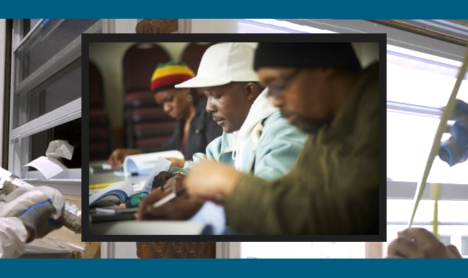
Career Pathways to Energy Efficiency Jobs: Apprenticeships
by Carina Wallack
“The time to join a fast growing, rewarding career has never been better,” says HVAC professional Chris Morin. “Every home needs these professional skills, most of which do not require a higher education and mountains of debt to attain… [The energy efficiency industry] is a great choice for those interested in a career move to a skill that cannot be outsourced by robotics.”
For those seeking stable jobs with opportunities for social and environmental impact, apprenticeships in the energy efficiency (EE) field are a good option. Energy efficiency professionals are everywhere, with varied roles. Read More
-
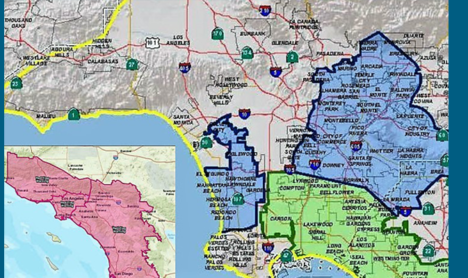
Key Questions Researched as Electricity Distribution Models and Practices Evolve
by Steve Cowell
Repeatedly, we hear about how fast the electric grid is transforming, and about how many difficult issues utilities, regulators, project developers, and other industry players must grapple with daily. Whether you engage with these issues every hour of the day or only tangentially, you know it’s necessary to keep up with what’s happening. I am pleased to announce new essential resources on non-wires alternatives (NWAs) and multi-user microgrids (MUMs). These two papers bring insight to current grid edge topics, and show how location is critically important to planning. Read More
-

Construction Jobs Significant in U.S. Energy Efficiency Employment
by Pat Stanton
Since early September, I have been eager to share findings from our recently released Energy Efficiency Jobs in America report. One key fact that surfaced is the importance of construction work in the energy efficiency (EE) industry. Overall, 2.25 million Americans are employed in EE. Of these workers, 1.27 million are employed in construction.*
Did you know that 1 in 6 of all United States construction workers spend 50% or more of their time on EE-related tasks? People may think that careers in efficiency are limited to changing light bulbs and installing insulation. But we’ve discovered that most EE construction work is related to installing high efficiency heating and cooling / HVAC systems. Read More
-

Veterans Rock Energy Efficiency Jobs
by Pat Stanton
Every workday, 2.25 million American energy efficiency professionals are on the job.[i] Many install insulation and advanced building controls and improve HVAC systems. Their work isn’t always recognized, but I strongly believe that it should be! For starters, energy efficiency (EE) cuts waste and costs while improving health and comfort.
NOTE: See the current version of Energy Efficiency Jobs in America for updated statistics.
Our new report, Energy Efficiency Jobs in America, offers insights about EE companies and workers. I was surprised to learn that although only six percent of the U.S. workforce are veterans, eleven percent of energy efficiency workers are veterans. Read More
-
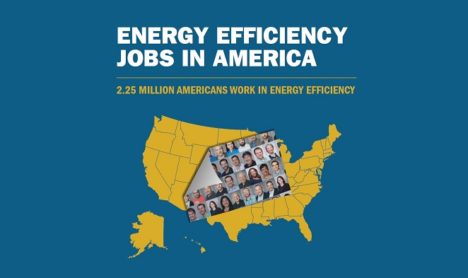
Energy Efficiency Jobs: USA’s Powerhouse
by Steve Cowell
News flash! The U.S. energy efficiency industry is becoming known as a jobs powerhouse. Why? Because it now supports a workforce of 2.25 million and continues to increase. I feel honored to spread this good news that buoys us beyond politics to unite a focus on the positive.
Our new report, Energy Efficiency Jobs in America, articulates the scale and scope of jobs across the country, with details for all 50 states. Energy efficiency (EE) is the largest sector in the U.S. clean energy economy. Read More
-
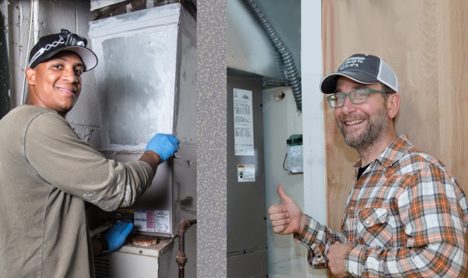
Defend Vital Energy Efficiency Funding
by Steve Cowell
The White House budget proposed devastating cuts to key U.S. energy efficiency programs. Eighty percent of FY19 program dollars could be in real danger. Although a FY’18 omnibus bill succeeded in funding the remainder of this year,* the fight for FY’19 is just beginning. If you believe, as I do, that energy efficiency brings lasting benefits to all Americans please make your voice heard now.
Read More -

#EEDay2017 is Coming!
by Carol Harley
Are you ready? We hope if you are reading this, you have already signed up for #EEDay2017. October 5 marks the second-annual campaign proclaiming energy efficiency’s powerful benefits. This year, we’re all about jobs and brighter solutions.
Efficiency is the cleanest, fastest, and most cost-effective energy solution. It’s also a job-creation powerhouse. Follow @FacesofEE on Twitter to meet some of the 2.2 million energy pros who work in energy efficiency.
Read More -

A New Lens for Assessing Cost-Effectiveness
by Julie Michals
The issue of determining the cost-effectiveness of energy efficiency resources has long been a complicated and sometimes contentious topic. Despite the perception that virtually all states nominally use some version of the tests identified decades ago by California, actual practice has been inconsistent and often subject to debate.
Read More -
Spotlight: Bright Ideas Gain Receptive Audience in DC
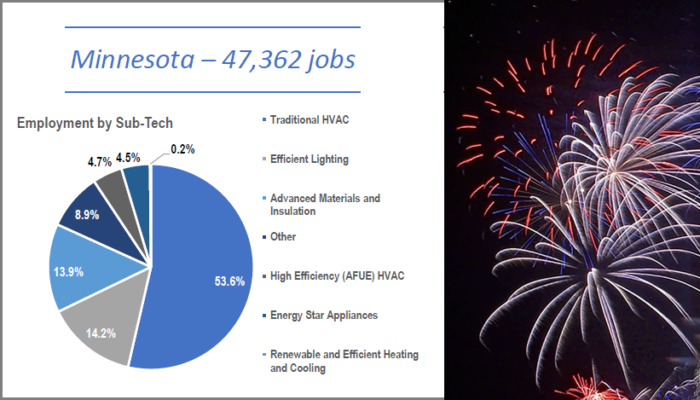 by Gabe Epstein
by Gabe EpsteinThe Friday of Independence Day weekend I had the pleasure of educating D.C. lawmakers on a few of E4TheFuture’s initiatives. I mean, what’s more patriotic than asserting your democratic rights by visiting elected officials to discuss energy efficiency and renewable technology?
-

Clean Energy in Today’s Political Climate: Businesses Double Down
by Rachel Ehrman
The mood in the room was one of fierce determination.
“It’s not a matter of politics…it’s about economics and humanity,” Mindy Lubber’s opening remarks drew a standing ovation from 600+ Ceres Conference attendees – from Fortune 500 companies and investors to U.S. non-profit organizations. As I rose from my seat in the room, I knew it was clear that I was among
Read More -
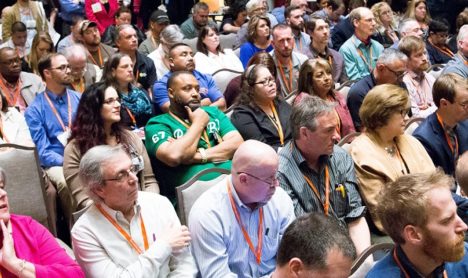
Healthy Housing – an Emerging Field in Home Performance
by Julie Michals
People flocked to healthy homes sessions at the Home Performance Coalition’s largest-ever conference last month. Non-energy benefits associated with energy efficiency upgrades have long been discussed, but this was the first time an HPC conference track was devoted exclusively to healthy housing and indoor air quality (IAQ).
-

Three Reasons You Should Sign a Letter to Save EE Funding
by Steve Cowell
I am passionate about energy efficiency because I’ve seen the results. People’s lives improve on so many levels, when they attend to their homes and buildings. And energy efficiency’s momentum has risen dramatically over the past couple of years. It’s good for both economic and personal health.
-
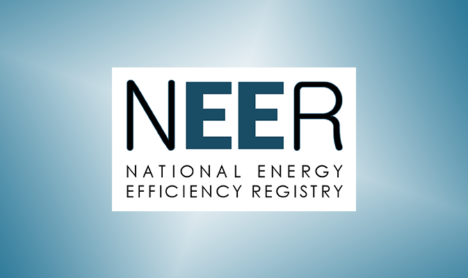
NEER Public Comment Period Begins April 2017
by Audrey Bragg
Energy efficiency is the largest sector in our massive clean energy economy–representing 3/4 of U.S. clean energy jobs. The National Energy Efficiency Registry (NEER) aims to make a good thing even better. Starting this month until May 31st, you can add your voice to the process of crafting this registry so that it works best for all people and purposes.
-
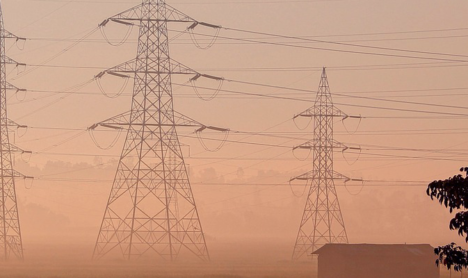
Bringing Energy Efficiency to the Table in Wholesale Markets
by Pat Stanton
For the first time, the Federal Energy Regulation Commission (FERC) has proposed a definition of Distributed Energy Resources (DER), a key component of the rapidly evolving electric grid. While identifying several resources as DERs including electric storage and electric vehicles, FERC neglected to name energy efficiency (EE) in its rulemaking notice.
Read More -
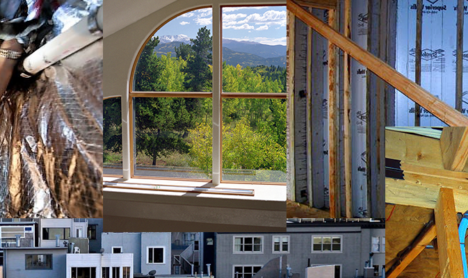
Can Energy Efficiency and Health Industries Bring Momentum Mainstream?
by Julie Michals
When E4TheFuture decided to explore the health co-benefits of energy efficiency in its November 2016 white paper Occupant Health Benefits of Residential Energy, we had a particular reason for doing so. Our initial focus was to document studies that could help inform cost-effectiveness screening—specifically, to help make the case that important health co-benefits of efficiency exist, and their value is not $0. We were excited to piggyback on a broader research effort undertaken by the US DOE.
-
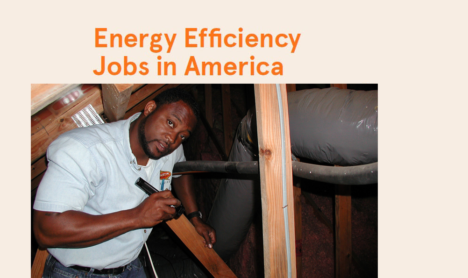
Energy Efficiency Jobs Matter to U.S.
by Steve Cowell
In 2016 we learned that energy efficiency is even more powerful than we thought. Beyond its use as a proven wise investment for cutting waste and saving dollars, the industry supports 1.9 million U.S. jobs—by far the largest sector in the U.S. clean energy economy. Our new report articulates the scale and scope of these jobs.
Recent Articles
- Once Upon an Energy Efficiency Conversation: Using Storytelling to Talk About Energy Policy
- Navigating Uncertainty: Staying Motivated and Inspired by the Growth of Energy Work
- Election Rhetoric vs. Reality: Pennsylvania’s Clean Energy Vision
- Carrying Our Weight: Shared Wisdom for Backpacking & Energy Efficiency
- The Human Element: Bringing Trauma Informed Practices to Clean Energy Policy